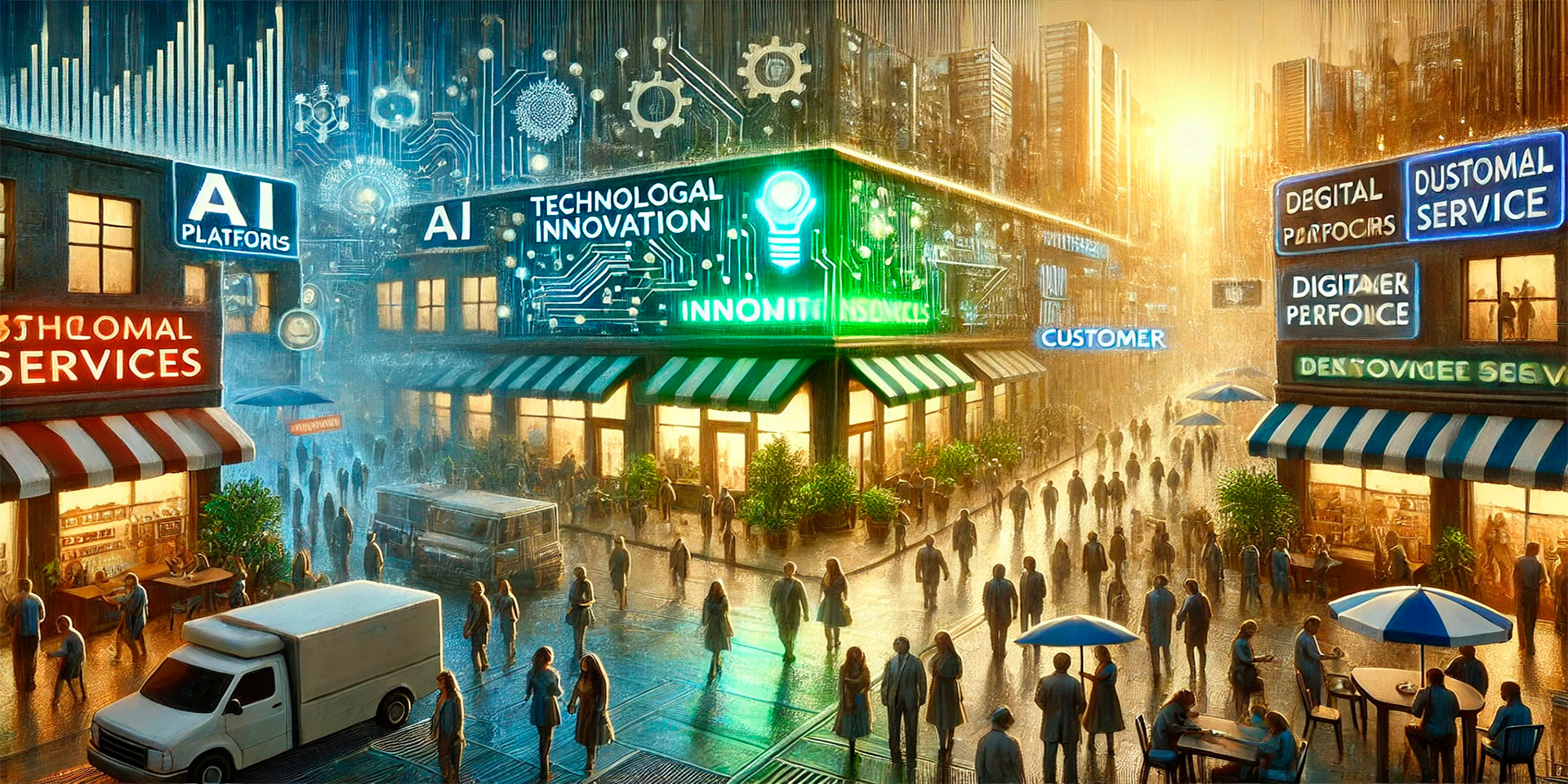In an oversaturated services market, businesses face intense competition, where the supply of services far exceeds consumer demand. This often leads to price wars, reduced profit margins, and difficulty in standing out from the competition. To thrive in such an environment, service providers must turn to innovation and differentiation. By offering unique value propositions, adopting new technologies, and constantly improving customer experience, companies can break free from the constraints of an oversaturated market and gain a competitive edge. This article explores how innovation can help service providers overcome oversaturation and sustain long-term growth.
The Challenges of an Oversaturated Services Market
An oversaturated market occurs when the number of service providers far exceeds the demand for their services. This leads to heightened competition, lower prices, and limited opportunities for differentiation. Many companies end up competing on price alone, which can erode profitability and lead to financial instability.
1. Increased Competition and Price Pressure
With too many players in the market and insufficient demand, service providers often find themselves locked in price competition, which can be unsustainable in the long term.
Challenges posed by price competition:
- Reduced profit margins: Constantly lowering prices to attract customers reduces the profitability of businesses, making it difficult to cover operational costs and invest in growth.
- Race to the bottom: Price wars can erode service quality, leading to dissatisfied customers and harming the reputation of service providers.
- Difficulty in scaling: Price pressure can limit the ability of companies to scale their operations and reach new customer segments.
2. Lack of Differentiation
In an oversaturated market, service providers often offer very similar products or services, making it challenging for consumers to differentiate between competitors. Without clear differentiation, companies struggle to build brand loyalty and attract a steady stream of customers.
Consequences of lack of differentiation:
- Consumer confusion: When services are too similar, customers may feel overwhelmed by choices, leading to indecision or dissatisfaction.
- Commoditization: Services become commoditized when there is little differentiation, meaning consumers see little to no added value in choosing one provider over another.
- Loss of market identity: Without a unique identity, businesses may struggle to stand out and attract long-term customers.

The Role of Innovation in Overcoming Market Oversaturation
Innovation is essential for service providers looking to break free from market oversaturation. By embracing new ideas, technologies, and strategies, businesses can offer distinctive services that set them apart from competitors. Here’s how innovation can help.
1. Embracing Technological Advancements
Technological innovation can help service providers streamline operations, improve customer experiences, and reduce costs. By incorporating the latest technologies, businesses can differentiate themselves in a crowded market.
Examples of technological innovations in service sectors:
- Automation and AI: Automated systems and AI can enhance service delivery, making processes faster and more efficient. For instance, chatbots can provide 24/7 customer support, and AI can personalize customer recommendations based on preferences.
- Online platforms and apps: Service providers can leverage online platforms to improve accessibility and convenience for customers, such as online booking systems, mobile apps, and customer portals.
- Data analytics: By using big data and analytics, businesses can better understand customer behavior, optimize their service offerings, and target their marketing efforts more effectively.
2. Focus on Customer Experience
One of the most powerful ways to stand out in a saturated market is by providing an exceptional customer experience. Service providers can innovate by focusing on the entire customer journey, from initial contact to post-service follow-up.
Ways to innovate customer experience:
- Personalization: Offering personalized services, such as tailored packages or individualized attention, can create a deeper connection with customers and increase loyalty.
- Seamless omnichannel service: Integrating multiple service channels (in-person, online, mobile) allows customers to interact with a brand in ways that are most convenient for them.
- Proactive customer support: Anticipating customer needs and providing proactive solutions can improve satisfaction and foster long-term relationships.
3. Product and Service Differentiation
Differentiation is key in a crowded market. Service providers need to find unique ways to offer value that goes beyond basic pricing. This could involve specializing in a niche market, offering superior quality, or adding complementary services.
Innovative strategies for differentiation:
- Niche market focus: Specializing in a particular niche, whether it’s a specific demographic or an underserved market, allows companies to cater to the unique needs of those customers.
- Bundling services: Service providers can innovate by offering bundled services that provide added value to customers, such as combined service packages or subscription models.
- Premium offerings: Offering higher-end or specialized services that cater to premium customers can create a new revenue stream while distinguishing the brand from lower-priced competitors.
4. Leveraging Sustainability and Social Responsibility
Sustainability and social responsibility are becoming increasingly important to consumers. Service providers who incorporate eco-friendly practices and social causes into their operations can attract a loyal customer base that values corporate responsibility.
Innovations in sustainability:
- Eco-friendly practices: Service providers can adopt green initiatives, such as reducing waste, using sustainable materials, or offering eco-conscious products and services, which appeal to environmentally conscious consumers.
- Socially responsible initiatives: Supporting local communities, fair labor practices, or charitable causes can help differentiate a brand, as consumers are more likely to support businesses aligned with their values.
- Transparency and trust: Communicating sustainability efforts clearly and authentically builds trust with customers, helping to create a competitive advantage.

The Benefits of Innovation in a Saturated Market
Innovation can provide several long-term benefits for service providers in an oversaturated market. When done right, innovation doesn’t just create differentiation—it also drives growth, improves customer retention, and strengthens a brand’s position in the market.
1. Increased Customer Loyalty
Customers are more likely to remain loyal to a brand that consistently offers innovative and high-quality services. By focusing on continuous improvement and staying ahead of trends, companies can create long-term relationships with their customers.
Building customer loyalty through innovation:
- Rewarding loyalty: Introducing customer loyalty programs or exclusive offers for repeat customers can build trust and enhance customer retention.
- Ongoing engagement: Companies can keep customers engaged by continuously offering new features, services, or benefits that align with customer needs and preferences.
2. Greater Competitive Advantage
Innovation allows companies to carve out a unique position in the marketplace. This competitive advantage is critical in crowded sectors where customers are overwhelmed with choices. Differentiating through innovative solutions helps businesses stay top-of-mind and attract new customers.
How innovation strengthens competitive advantage:
- Brand recognition: Providing exceptional and unique services allows companies to build a strong brand identity that resonates with their target audience.
- First-mover advantage: Being the first to introduce a new product, service, or feature can establish market leadership and position the company as an industry innovator.
3. Sustainable Growth and Profitability
When service providers differentiate themselves and focus on innovation, they can tap into new revenue streams and markets. This not only ensures long-term growth but also helps businesses maintain profitability even in a saturated market.
Achieving sustainable growth through innovation:
- Diversified revenue streams: Innovation allows businesses to diversify their offerings, creating new streams of income that help stabilize financial performance.
- Cost efficiency: Innovations in technology and process optimization can reduce operational costs, improving profit margins while maintaining service quality.
Conclusion
Innovation is the key to surviving and thriving in an oversaturated services market. By embracing new technologies, differentiating their offerings, focusing on customer experience, and incorporating sustainability practices, service providers can break free from the constraints of an oversupplied market. Innovation doesn’t just create a competitive edge—it fosters long-term growth, customer loyalty, and profitability, ensuring businesses can sustain their success even in the most challenging market conditions.
